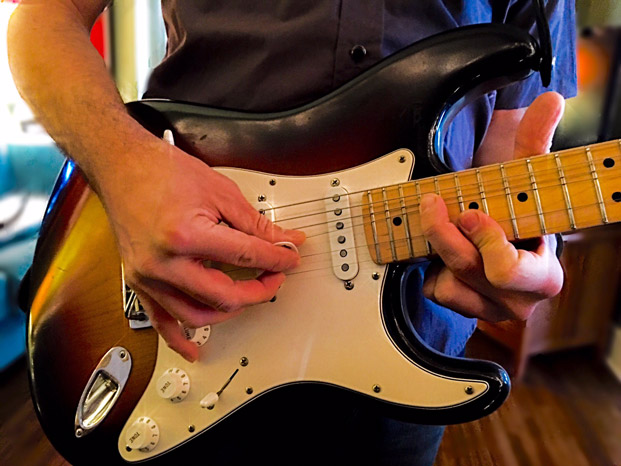Add Some "Speed" with This Simple Shred-Style Lick
This simple shred lick is easy to learn and has many applications.

If you've read my previous columns, you might have caught on to the fact that I'm not a fan of purely technique-based solos. I prefer a more melodic approach to lead guitar playing.
However, sometimes in rock and metal, there are moments when fast, "shred style" licks are appropriate. Most of my previous lessons focus on the melodic side of my playing, so I wanted to switch things up and give you a simple "shred" lick that's easy to learn and has many applications.
In its most basic form, the lick is a sequence of six notes played as a sextuplet or two sets of triplets (depending on the tempo). The notes are played on the same string, which makes it very easy to alternate-pick and build speed.
Once you have mastered the basic pattern, you can apply the lick to different scales and positions to give an almost endless amount of variations.
I'm going to guide you through the basic form and then show you a few more of my favorite ideas.

The basic form is played using the first three notes of the E minor scale on the high E string at the 12th fret. Memorize the pattern, then loop it up to create an alternate picking exercise. As with any other speed-building exercise, use a metronome to track your progress.

When you are comfortable with the pattern, try moving it through every set of three notes within the E minor scale starting on the fifth fret of the B string. This is a nice ascending pattern that will help you memorize how to play entire scales on one string.

This is the same approach, but it utilizes switching strings to expand the range of the pattern. An accomplished musician will be able to play any scale vertically and horizontally across the neck and be able to switch between the two at any position within the scale.

You don't have to stay with just groups of three notes. This idea expands the original pattern into an E minor arpeggio. Yngwie Malmsteen uses a similar lick in "Far Beyond the Sun."

This final idea is taken from one one of my own solos where I change the feel of the pattern by switching to 16th notes. I change the sequence slightly to make a pattern of 16th notes to fit nicely into a bar. To do this, I play the original six-note pattern twice and then play an additional four notes to complete the bar. This creates an interesting dynamic and makes the lick sound less like an exercise.
Will Wallner is a guitarist from England who now lives in Los Angeles. He recently signed a solo deal with Polish record label Metal Mind Productions for the release of his debut album, which features influential musicians from hard rock and heavy metal. He also is the lead guitarist for White Wizzard (Earache Records) and toured Japan, the U.S. and Canada in 2012. Follow Will on Facebook and Twitter.
Get The Pick Newsletter
All the latest guitar news, interviews, lessons, reviews, deals and more, direct to your inbox!







![Joe Bonamassa [left] wears a deep blue suit and polka-dotted shirt and plays his green refin Strat; the late Irish blues legend Rory Gallagher [right] screams and inflicts some punishment on his heavily worn number one Stratocaster.](https://cdn.mos.cms.futurecdn.net/cw28h7UBcTVfTLs7p7eiLe.jpg)


